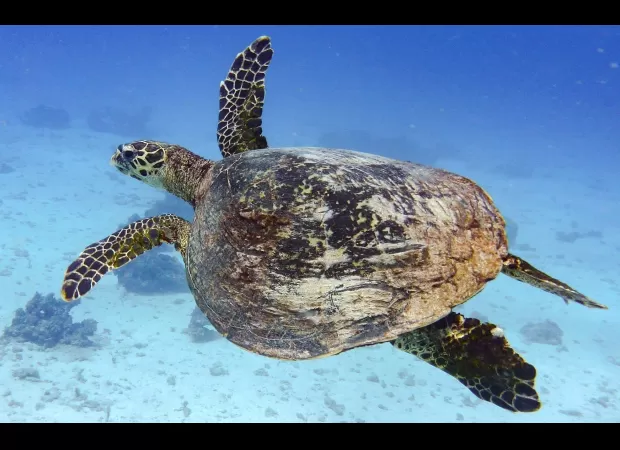Fossil of 6-mil y/o sea turtle shows rare DNA found, providing insight into evolution.
Today's sea turtles are descendants of ancient turtles that lived many years ago.

Remnants of DNA have been discovered in fossilised remains of a sea turtle dating back to 6 million years ago. This marks one of the rare times genetic material has been identified in such ancient fossils of a vertebrate, researchers said on Thursday.
The fossil was excavated along Panama's Caribbean coast in 2015 and is partial, with a relatively complete carapace - the turtle's shell - but not the rest of the skeleton. The turtle would have been about a foot long when alive, they said.
What was so remarkable about this discovery is the presence of remarkably preserved bone cells, called osteocytes, in which the cell nuclei reacted to a chemical solution that allowed the researchers to recognize the presence of remnants of DNA, the molecule that carries genetic information for an organism's development and functioning.
This is especially extraordinary since DNA is quite perishable, and is only rarely found preserved in ancient remains. The only older vertebrate fossils than the newly discovered turtle to have been found with similar DNA remnants were of two dinosaurs - Tyrannosaurus, which lived about 66 million years ago, and Brachylophosaurus, which lived about 78 million years ago.
The turtle is from the same genus - Lepidochelys - as two of the world's seven living species of sea turtles - the Kemp's ridley, the world's smallest sea turtle, and the olive ridley. Kemp's ridley, with a triangular-shaped head and a slightly hooked beak, is primarily found in the Gulf of Mexico, while the olive ridley, which closely resembles the Kemp's ridley, has a larger distribution, primarily found in the tropical regions of the Pacific, Indian and Atlantic oceans.
The fossil represents the oldest-known member of Lepidochelys, and helps to shed light on the poorly understood evolutionary history of this genus. It also opens up the possibility of being able to sequence small pieces of DNA in the future, and infer things about their close relatives or involve that information in a broader molecular evolutionary study.
This discovery is a fascinating example of the power of paleontology, which can help us understand the distant past and the evolution of species. It also serves as a reminder of the need to protect our environment and the habitats of these animals so that they can continue to exist in the future.
14 Views






